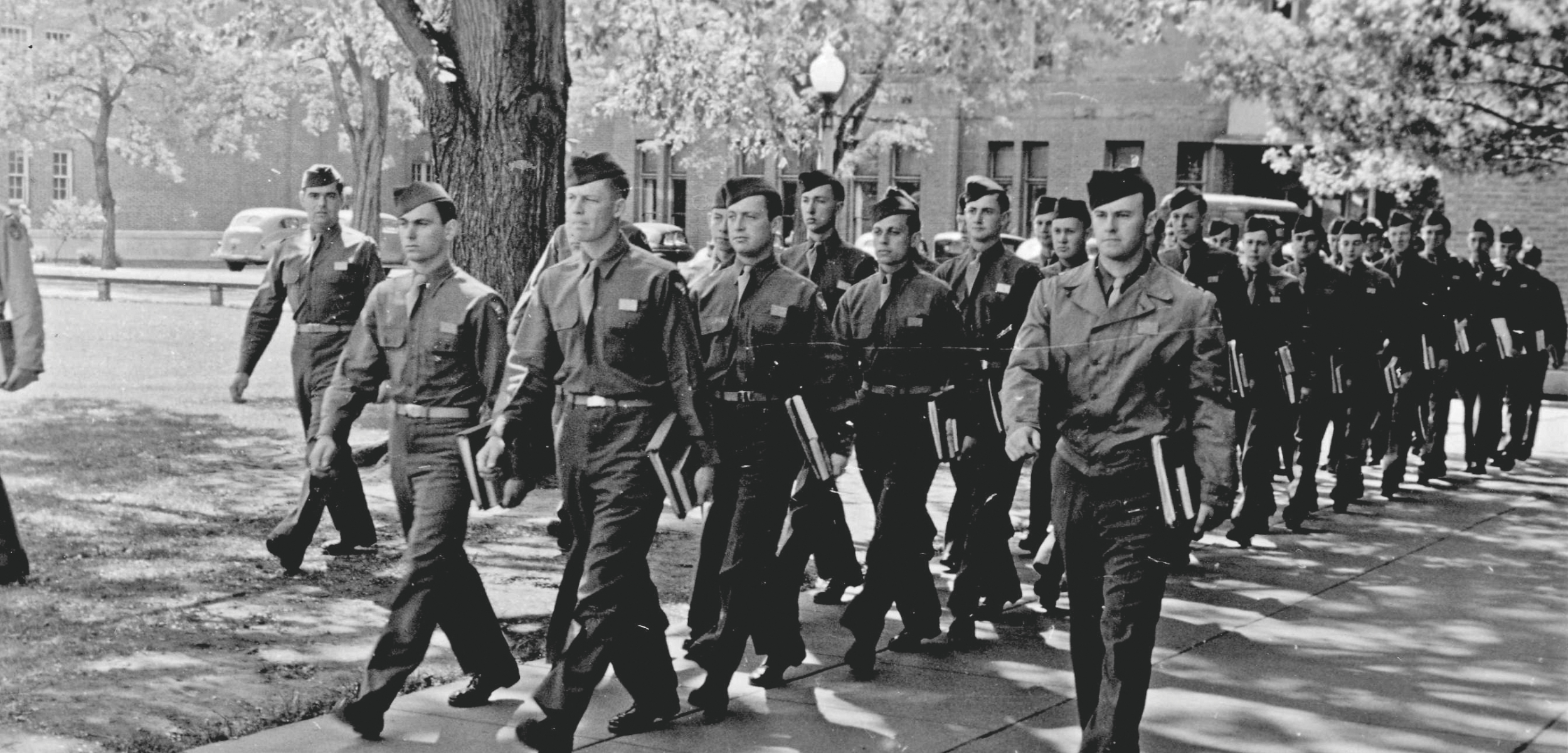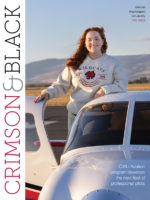
Once America found itself deeply involved in World War II, CWU quickly mobilized to support the war effort.
By early 1942, the campus had implemented procedures for the evacuation of buildings (in case of attack) and also began trial “blackouts,” with all campus lights extinguished by 11:45 p.m.
Additionally, by the fall of 1942, as more and more local men were drafted into service, the Central Washington region experienced a labor shortage in apple orchards. Students voted to close school for three days so they could help during the harvest that year. Some 375 students and faculty (out of 540 total) volunteered to pick apples in Yakima, Wenatchee, and other parts of the region.
“Altogether, they picked nearly 36,000 boxes of apples, worth almost $60,000, most of which otherwise would have been lost, since cold weather came early that year,” noted historian Samuel R. Mohler.
Students also aided the war effort in other ways. Female students worked with the Red Cross and the United Service Organizations (U.S.O.) and spearheaded sales efforts for savings bonds. Residents of Sue Lombard Hall set aside a “Sacrifice Day,” on which they donated money to the war effort that they might otherwise have spent on soda or personal items.
To stay informed on the issues of the day, the campus hosted a Wednesday night “Culture Hour,” where Central faculty made presentations on topics such as “Hitler’s Rise to Power” and “Social Trends in Music in the Twenties and Thirties.”
Flying High
In 1940, Central successfully petitioned the Federal Civil Aeronautics Authority for a Civilian Pilot training unit. Initially, the program had only 15 students, but once the war started, the quota was raised to 40. By the time the program concluded in mid-1942, a total of 263 students had completed the training, most of whom served in the Armed Services during the war.
That, however, wasn’t the end of Central’s partnership with the federal government for pilot training. In the fall of 1942, President Robert McConnell, upon hearing the government wanted to establish a training school for units of the Army Air Force, sent telegrams to the War Department offering the college’s facilities and assistance.
The offer was accepted, and by the end of January 1943, Central was planning for the first Army Air Force cadets. On March 1, 1943, 200 men from the 314th Army Air Force Training Detachment arrived on campus.
To accommodate the influx of cadets, McConnell shuffled around some of the campus housing. Male students previously residing in Munson Hall moved into two downtown Ellensburg hotels (the Antlers Hotel and Webster Hotel), while female students living in Kamola Hall were relocated into Munson (cadets later used Munson as well). The moves opened up Kamola for the cadets.
Patrick Devlin, who worked in Central’s Facilities Management Division from 1984 until 2018, said he discovered over the years a number of items dating back to the cadets’ time on campus, including a “Dear John” letter behind a heating register in Kamola when it was being remodeled.
In March 1943, more than 200 soldiers, officers, and military staff members of the 314th Army Air Force arrived on campus to commence their training, which included classes in mathematics, physics, history, English, and physical training, in addition to training to serve as air crews for fighter units.
“As for the cadets themselves, they seemed to like it [Central],” Mohler wrote. “One of the visiting Army inspectors said that the singing of the students as they marched in formation from one building to another reflected ‘an enthusiasm and high state of morale.’”
For the next 18 months, various military units passed through the training program at Central. When the program began to wind down in 1945, McConnell unsuccessfully sought to persuade the military to remain at Central. While that effort failed, Central was selected in 1951 to participate in the Air Force ROTC program, which continues to this day (CWU’s Army ROTC program was established in 1981).






comments powered by Disqus